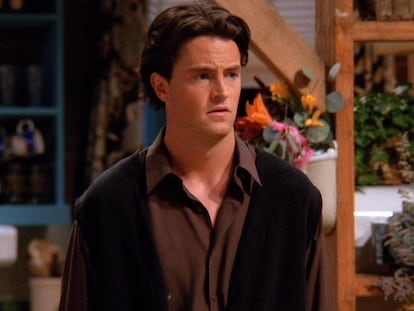James Burrows and ‘Frasier’: a TV legend directing the comeback of a series that made history
The man who has directed more than 1,000 episodes spanning his career steps behind the camera for the return of the drama starring Kelsey Grammer
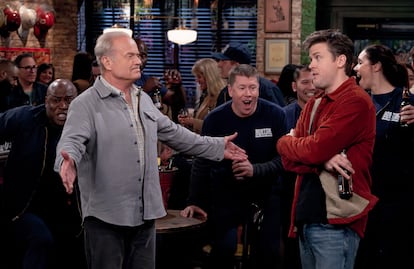
On May 13, 2004, Frasier wrapped up with one of the most watched episodes in the history of television. The show finished after 11 seasons, 265 episodes and several records broken, such as becoming the comedy with the most Emmy Awards in history, 37 — until Game of Thrones, it was the series, drama or comedy, with the most awards. A spin-off of the also hugely successful Cheers, the show followed the adventures of Dr. Frasier Crane, played by Kelsey Grammer, a snobbish and sarcastic psychiatrist with a radio studio who lives with his father, a grumpy ex-cop, and his brother, another even snobbier psychiatrist.
Just like practically everything else on TV, Frasier is also making a comeback. The sitcom returns on Friday, November 3 on SkyShowtime and it does so with plenty of tweaks. This time, Frasier (Kelsey Grammer returns) moves to Boston to try to mend his relationship with his son, a young firefighter who has had hardly any contact with his father. This exposes the generational and class clash, once again.
Television has changed during the almost 20 years Frasier has been off-air, the audience has changed, even the humor has changed. But some things haven’t changed. The show is still a classic sitcom, one of those recorded in a studio in front of an audience and with on-air laughter. James Burrows (Los Angeles, 82 years old) is a television legend, and knows more about this than anybody else. He has directed more than 1,000 episodes and has made more than 30 pilot episodes. Burrows, a true institution in American television, began directing episodes of The Mary Moore Tyler Show in 1974. Half a century later, he considers himself semi-retired but still returns to the field from time to time, as he did to make the first two episodes of this resurrection, where he directs his friend Kelsey Grammer. “We have known each other for 40 years now, we love each other very much,” he says on his work with the actor.
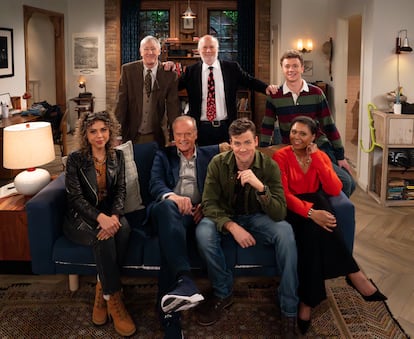
“I went back to directing, first, because I wanted to protect the character of Frasier, I wanted to make sure Kelsey had a quality script in front of him. And Chris [Harris] and Joe [Cristalli, the show’s returning writers] did a great job. The word semi comes before retired because I like to do some work two or three times a year. I don’t know if I could ever shoot all the episodes of a series again, but doing those two episodes in February was a wonderful, revitalizing experience,” Burrows said in an interview with EL PAÍS conducted over a video call at the end of September.
“Frasier’s character remains the same, he hasn’t evolved over the years. You don’t want to rewrite the Bible, you want to make sure the character stays the same,” he explains in relation to the character’s return. “He’s a universal character and the man who plays him is an incredible actor. He’s a pompous man but that makes him vulnerable, so the audience can identify with him, and that’s the actor’s gift. Now, the scriptwriters have written a new series with him being surrounded by new people who put this pompous guy in new situations and it’s really fun,” says Burrows on the return of Frasier.
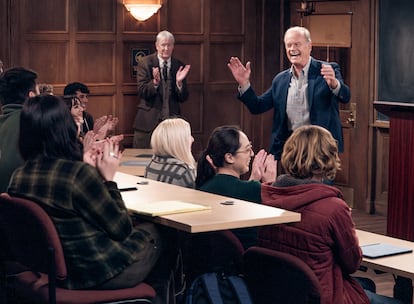
While nearly half a century has passed since the director started out in television, he still remembers how he got into the business and what made him fall in love with it. “I got lucky because what I do in this profession is really theater. I shoot a play with my cameras. I came from the theater, my father worked in the theater [Abe Burrows, Pulitzer, and Tony Award-winning comedian, writer, radio, and theater director]. He would take me with him, and I could see how he worked. Then came the opportunity to do a sitcom, The Mary Tyler Moore Show, the first series I did. I knew Mary [Tyler Moore]. My theater training really helped me. The cameras, all the technical stuff, I was able to learn. But you can’t learn how to talk to actors, what’s funny, how to deal with situations in the theater world.” He also recalls his first day in television. “Of course I remember, I was very careful. I was really spooked that day. I was a guy from New York, I didn’t have any credibility for them other than the fact that I knew Mary. But I worked very hard on that series, and they were very pleased with my work. And the rest is history.”
More specifically, the rest is television history. Winner of 11 Emmy Awards, Burrows was nominated for these accolades every year from 1980 to 2005, with the sole exception of 1997. He has worked behind the cameras of pretty much every major U.S. television sitcom. He was the director of 75 episodes of Taxi, co-creator of Cheers (of which he directed 237 of its 271 episodes), 32 episodes of the original Frasier, 15 episodes of Friends (including the first one) and all 246 episodes of Will & Grace, the whole series from beginning to end, including its revival five years ago.
The young theater lad found that sitcoms recorded with live audiences allowed him to maintain that contact with people. “My career has always been with series recorded in front of live audiences. Doing a series in front of the audience makes you get their response. Their laughter fills the place with energy. That’s where I grew up and that’s what I still do. And I love it; for me, it’s the best way to do television.”
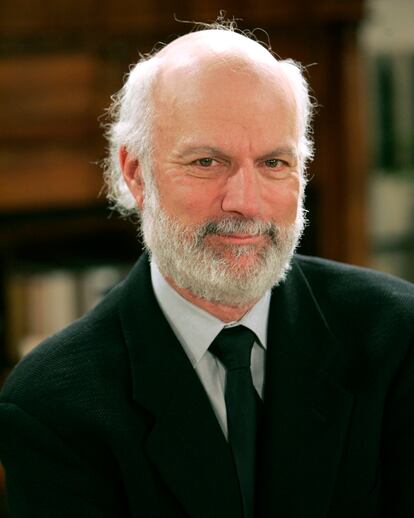
Burrows went on to become the go-to person for sitcoms to ensure they got off to a good start. When asked how he chose the series he worked on, he pauses for a few seconds before answering. “The script is the most important thing, I have to like it. It’s not necessarily about the idea, it’s about the execution of the idea. A bar in Boston is not a fascinating idea, but how it was executed was just amazing. Six friends sitting in a coffee shop is not a great idea, but how it was executed is the important thing.”
In addition to the script, other factors come into play when it comes to making a series a success, according to Burrows’ experience. “You have to get lucky with the actors, because you don’t know if they’re going to be stars or not, they have to be available. And then, they have to put the series in a good place on the grid so it doesn’t get cancelled. Because in the series I’ve done there were no stars, we made them into stars, so there’s no initial reason for viewers to watch them. It’s a mixture of all of that. Before recording the first episode, an audience is selected to watch the series, and if that sample audience likes the series, it will be a success.”
Sign up for our weekly newsletter to get more English-language news coverage from EL PAÍS USA Edition
Tu suscripción se está usando en otro dispositivo
¿Quieres añadir otro usuario a tu suscripción?
Si continúas leyendo en este dispositivo, no se podrá leer en el otro.
FlechaTu suscripción se está usando en otro dispositivo y solo puedes acceder a EL PAÍS desde un dispositivo a la vez.
Si quieres compartir tu cuenta, cambia tu suscripción a la modalidad Premium, así podrás añadir otro usuario. Cada uno accederá con su propia cuenta de email, lo que os permitirá personalizar vuestra experiencia en EL PAÍS.
¿Tienes una suscripción de empresa? Accede aquí para contratar más cuentas.
En el caso de no saber quién está usando tu cuenta, te recomendamos cambiar tu contraseña aquí.
Si decides continuar compartiendo tu cuenta, este mensaje se mostrará en tu dispositivo y en el de la otra persona que está usando tu cuenta de forma indefinida, afectando a tu experiencia de lectura. Puedes consultar aquí los términos y condiciones de la suscripción digital.
More information
Archived In
Últimas noticias
Most viewed
- Sinaloa Cartel war is taking its toll on Los Chapitos
- Oona Chaplin: ‘I told James Cameron that I was living in a treehouse and starting a permaculture project with a friend’
- Reinhard Genzel, Nobel laureate in physics: ‘One-minute videos will never give you the truth’
- Why the price of coffee has skyrocketed: from Brazilian plantations to specialty coffee houses
- Silver prices are going crazy: This is what’s fueling the rally

